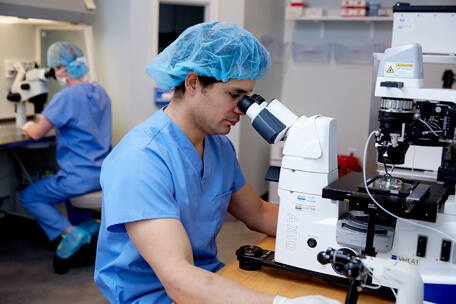On 3 April 2014, Cook hosted a pre-symposium educational session on in-vitro maturation (IVM) at the 5th Congress of the Asia Pacific Regional Initiative on Reproduction (ASPIRE) in Brisbane, Australia.
Take a look at the short video clip featuring Associate Professor Jeremy Thompson and Associate Professor Robert Gilchrist. The clip provides a brief overview of IVM and its benefits and details on the possible role of IVM in the future of infertility treatments and fertility preservation.
The session addressed the exciting research developments and current clinical approaches in the field of IVM. The session was chaired by Associate Professor Jeremy Thompson, head of the Early Development Group within the School of Paediatrics and Reproductive Health at the University of Adelaide. It featured presentations from Michel De Vos, MD, PhD, a clinical professor in reproductive medicine and a medical co-director at the Centre for Reproductive Medicine at UZ Brussel-VUB, and Rob Gilchrist, associate professor at the University of New South Wales.
In the practice of IVM, oocytes are collected from a woman’s ovaries after undergoing minimal hormonal stimulation. The oocytes are then matured outside the body. The reduction of hormonal stimulation is a major achievement. The key difference between IVM and standard in-vitro fertilisation (IVF) is the use of hormonal stimulation of the ovary in the latter. IVM, on the other hand, consists of the retrieval of an immature egg with little or no hormonal stimulation of the ovaries. The egg is then cultured for 24-48 hours to reach maturation. In contrast, conventional IVF begins with hormonal stimulation treatment, during which the patient receives large amounts of hormones for several weeks before the eggs are collected in a matured state. In all other areas, IVM is essentially the same as a standard IVF procedure.
One major potential benefit for the patient is the reduced risk of severe fluid retention, caused by oocyte stimulation, which is often experienced by patients during standard IVF cycles. This reduction could positively impact the quality of a patient’s daily life during treatment.
IVM is considered to be most beneficial in the treatment of patients who suffer from polycystic ovary syndrome (PCOS). PCOS is caused by an imbalance of hormones and is characterised by the growth of numerous cysts in the ovary. Women with PCOS are often very sensitive to the hormones used in IVF, which can increase the risk of ovarian hyperstimulation syndrome (OHSS). As a consequence, IVM is considered to be a suitable treatment for patients with PCOS as it involves minimal hormonal stimulation.
You can register your interest in future educational events in your territory by visiting our Vista Collaboration and Learning Program EMEA website.
